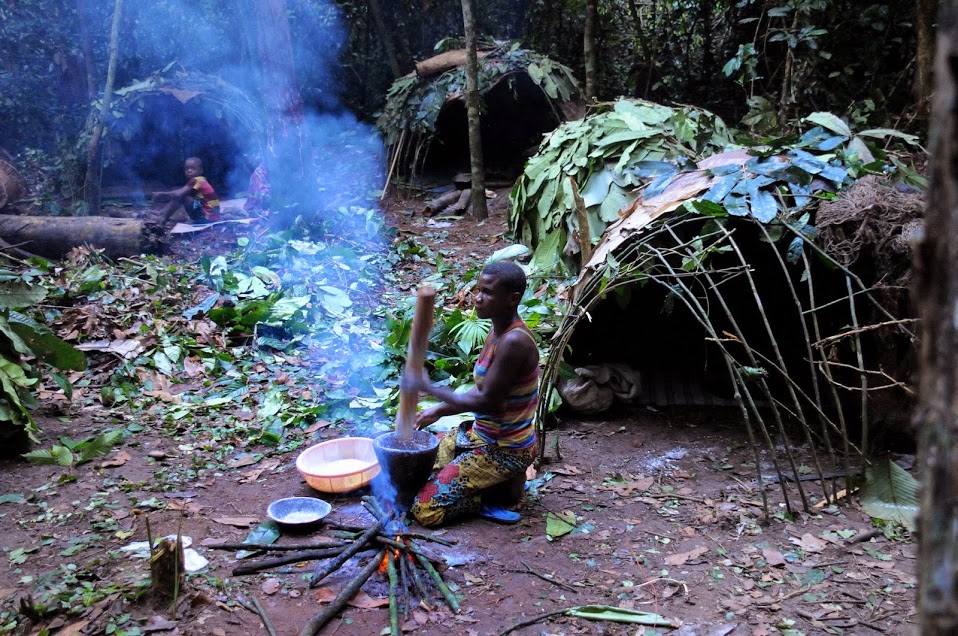 |
Attachment Theory
Attachment theory is a psychological and evolutionary framework, concerning the relationships between humans, particularly the importance of early bonds between infants and their primary caregivers. Developed by psychiatrist and psychoanalyst John Bowlby (1907–90), the theory posits that infants need to form a close relationship with at least one primary caregiver to ensure their survival, and to develop healthy social and emotional functioning. Pivotal aspects of attachment theory include the observation that infants seek proximity to attachment figures, especially during stressful situations. Secure attachments are formed when caregivers are sensitive and responsive in social interactions, and consistently present, particularly between the ages of six months and two years. As children grow, they use these attachment figures as a secure base from which to explore the world and return to for comfort. The interactions with caregivers form patterns of attachment, which in t ... [...More Info...] [...Related Items...] OR: [Wikipedia] [Google] [Baidu] |
 |
Eskimo Family NGM-v31-p564-2
''Eskimo'' () is a controversial Endonym and exonym, exonym that refers to two closely related Indigenous peoples: Inuit (including the Alaska Native Iñupiat, the Canadian Inuit, and the Greenlandic Inuit) and the Yupik peoples, Yupik (or Siberian Yupik, Yuit) of eastern Siberia and Alaska. A related third group, Aleuts, who inhabit the Aleutian Islands, are generally excluded from the definition of ''Eskimo''. The three groups share a relatively recent common ancestor, and speak related languages belonging to the family of Eskaleut languages. These circumpolar peoples have traditionally inhabited the Arctic and subarctic regions from eastern Siberia (Russia) to Alaska (United States), Northern Canada, Nunavik, Nunatsiavut, and Greenland. Some Inuit, Yupik, Aleut, and other individuals consider the term ''Eskimo'', which is of a disputed etymology, to be pejorative or even offensive. ''Eskimo'' continues to be used within a historical, linguistic, archaeological, and cultural ... [...More Info...] [...Related Items...] OR: [Wikipedia] [Google] [Baidu] |
|
Affectional Bond
In psychology, an affectional bond is a type of attachment behavior one individual has for another individual, typically a caregiver for their child, in which the two partners tend to remain in proximity to one another. The term was coined and subsequently developed over the course of four decades, from the early 1940s to the late 1970s, by psychologist John Bowlby in his work on attachment theory. The core of the term ''affectional bond'', according to Bowlby, is the attraction one individual has for another individual. The central features of the concept of affectional bonding can be traced to Bowlby's 1958 paper, "The Nature of the Child's Tie to his Mother".Bowlby, J. (1958). "The Nature of the Childs Tie to his Mother." '' International Journal of Psychoanalysis'' 39: 350–373. Five criteria Bowlby referred to attachment bonds as a specific type of "affectional" bond, as described by him and developmental psychologist Mary Ainsworth. She established five criteria for affecti ... [...More Info...] [...Related Items...] OR: [Wikipedia] [Google] [Baidu] |
|
|
Strange Situation
The strange situation is a procedure devised by Mary Ainsworth in the 1970s to observe attachment in children, that is relationships between a caregiver and child. It applies to children between the age of 9 to 30 months. Broadly speaking, the attachment styles were (1) secure and (2) insecure (ambivalent and avoidance). Later, Mary Main and her husband Erik Hesse introduced the 4th category, disorganized. The procedure played an important role in the development of attachment theory. Structured observation In this procedure of the Strange Situation, the child is observed playing for 21 minutes while caregivers and strangers enter and leave the room, recreating the flow of the familiar and unfamiliar presence in most children's lives. The situation varies in stressfulness and the child's responses are observed. The child experiences the following situations: * Parent and infant are introduced to the experimental room. * Parent and infant are alone. The parent does not participat ... [...More Info...] [...Related Items...] OR: [Wikipedia] [Google] [Baidu] |
|
|
Evolutionary Systems
Evolutionary systems are a type of system, which reproduce with mutation whereby the most fit elements survive, and the less fit die down. One of the developers of the evolutionary systems thinking is Béla H. Bánáthy. Evolutionary systems are characterized by "moving equilibria and the dynamics of coevolutionary interactions which can not be foreseen ex ante."Rammel, Christian, and Jeroen CJM van den Bergh. "Evolutionary policies for sustainable development: adaptive flexibility and risk minimising." Ecological Economics 47.2 (2003): 121-133. The study of evolutionary systems is an important subcategory of Complex Systems research. See also * Biological system * Emergent organization * Evolutionary computation Evolutionary computation from computer science is a family of algorithms for global optimization inspired by biological evolution, and the subfield of artificial intelligence and soft computing studying these algorithms. In technical terms ... * Evolut ... [...More Info...] [...Related Items...] OR: [Wikipedia] [Google] [Baidu] |
|
 |
Allomothering
Allomothering, allomaternal infant care/handling, or non-maternal infant care/handling is performed by any group member other than the mother. Alloparental care is provided by group members other than the genetic father or the mother and thus is distinguished from parental care. Both are widespread phenomena among Eusociality, social insects, Bird, birds and Mammal, mammals. Allomothering comprises a wide variety of behaviors including: carrying, provisioning, grooming, touching, nursing (allonursing), and protecting infants from predators or conspecifics. Depending on age-sex composition of groups, alloparents, helpers or "handlers" can be non-reproductive males in Polyandry in animals, polyandrous systems, reproductive or non-reproductive adult females, young or older juveniles, or older brothers or sisters helping to raise their younger siblings. Non-human primates The term allomother first appeared in a sociobiological analysis of reproductive strategies among langur monkeys ... [...More Info...] [...Related Items...] OR: [Wikipedia] [Google] [Baidu] |
|
Simply Psychology
Simply may refer to: * ''Simply'' (Blossom Dearie album), 1982 * ''Simply'' (K. T. Oslin album), 2015 * "Simply", a song by De La Soul from the 2001 album '' AOI: Bionix'' * Simply Market Simply Market is a brand of French supermarkets formed in 2005. This brand is a new concept to eventually replace Atac supermarkets. The brand belongs to the AuchanSuper subsidiary that manages the branches of Auchan supermarkets. The group pla ..., a French supermarket chain * Simply Beverages, an American fruit juice company See also * Simple (other) {{disambiguation ... [...More Info...] [...Related Items...] OR: [Wikipedia] [Google] [Baidu] |
|
|
Critical Period
In developmental psychology and developmental biology, a critical period is a maturational stage in the lifespan of an organism during which the nervous system is especially sensitive to certain environmental stimuli. If, for some reason, the organism does not receive the appropriate stimulus during this "critical period" to learn a given skill or trait, it may be difficult, ultimately less successful, or even impossible, to develop certain associated functions later in life. Functions that are indispensable to an organism's survival, such as vision, are particularly likely to develop during critical periods. "Critical period" also relates to the ability to acquire one's first language. Researchers found that people who passed the "critical period" without having developed communication skills would not acquire their first language fluently. Some researchers differentiate between 'strong critical periods' and 'weak critical periods' (also known as 'sensitive' periods)—defining ' ... [...More Info...] [...Related Items...] OR: [Wikipedia] [Google] [Baidu] |
|
|
Basic Books
Basic Books is a book publisher founded in 1950 and located in New York City, now an imprint of Hachette Book Group. It publishes books in the fields of psychology, philosophy, economics, science, politics, sociology, current affairs, and history. History Basic Books originated as a small Greenwich Village-based book club marketed to psychoanalysts. Arthur Rosenthal took over the book club in 1950, and under his ownership it soon began producing original books, mostly in the behavioral sciences. Early successes included Ernest Jones's ''The Life and Work of Sigmund Freud'', as well as works by Claude Lévi-Strauss, Jean Piaget and Erik Erikson. Irving Kristol joined Basic Books in 1960, and helped Basic to expand into the social sciences. Harper & Row purchased the company in 1969. In 1997, HarperCollins announced that it would merge Basic Books into its trade publishing program, effectively closing the imprint and ending its publishing of serious academic books. That sam ... [...More Info...] [...Related Items...] OR: [Wikipedia] [Google] [Baidu] |
|
 |
Hunter-gatherer
A hunter-gatherer or forager is a human living in a community, or according to an ancestrally derived Lifestyle, lifestyle, in which most or all food is obtained by foraging, that is, by gathering food from local naturally occurring sources, especially wild edible plants but also insects, Fungus, fungi, Honey hunting, honey, Eggs as food, bird eggs, or anything safe to eat, or by hunting game (pursuing or trapping and killing Wildlife, wild animals, including Fishing, catching fish). This is a common practice among most vertebrates that are omnivores. Hunter-gatherer Society, societies stand in contrast to the more Sedentism, sedentary Agrarian society, agricultural societies, which rely mainly on cultivating crops and raising domesticated animals for food production, although the boundaries between the two ways of living are not completely distinct. Hunting and gathering was humanity's original and most enduring successful Competition (biology), competitive adaptation in the nat ... [...More Info...] [...Related Items...] OR: [Wikipedia] [Google] [Baidu] |
 |
Adaption
In biology, adaptation has three related meanings. Firstly, it is the dynamic evolutionary process of natural selection that fits organisms to their environment, enhancing their evolutionary fitness. Secondly, it is a state reached by the population during that process. Thirdly, it is a phenotypic trait or adaptive trait, with a functional role in each individual organism, that is maintained and has evolved through natural selection. Historically, adaptation has been described from the time of the ancient Greek philosophers such as Empedocles and Aristotle. In 18th and 19th-century natural theology, adaptation was taken as evidence for the existence of a deity. Charles Darwin and Alfred Russel Wallace proposed instead that it was explained by natural selection. Adaptation is related to biological fitness, which governs the rate of evolution as measured by changes in allele frequencies. Often, two or more species co-adapt and co-evolve as they develop adaptations that in ... [...More Info...] [...Related Items...] OR: [Wikipedia] [Google] [Baidu] |
 |
Attachment Behaviour In Wolves
A pack is a social group of conspecific canines. The number of members in a pack and their social behavior varies from species to species. Social structure is very important in a pack. Canine packs are led by a breeding pair. Pack behaviour in specific species African wild dogs (''Lycaon pictus'') live and hunt in packs. Males assist in raising the pups, and stay with their pack for life. The females leave their birth pack at approximately 2.5 years old to join another pack without females. Males outnumber the females in a pack. African wild dogs are not territorial, and hunt cooperatively in their packs. For example, they will run down large game and tear it apart with their pack. They also cooperate in caring for wounded, sick, and young pack members. Gray wolves (''Canis lupus'') tend to live in packs that consist of adult parents and their offspring of the last two or three years. The adult parents are usually unrelated, and other unrelated wolves may sometimes join the ... [...More Info...] [...Related Items...] OR: [Wikipedia] [Google] [Baidu] |
 |
Wolves
The wolf (''Canis lupus''; : wolves), also known as the grey wolf or gray wolf, is a canine native to Eurasia and North America. More than thirty subspecies of ''Canis lupus'' have been recognized, including the dog and dingo, though grey wolves, as popularly understood, only comprise naturally-occurring wild subspecies. The wolf is the largest wild extant member of the family Canidae, and is further distinguished from other '' Canis'' species by its less pointed ears and muzzle, as well as a shorter torso and a longer tail. The wolf is nonetheless related closely enough to smaller ''Canis'' species, such as the coyote and the golden jackal, to produce fertile hybrids with them. The wolf's fur is usually mottled white, brown, grey, and black, although subspecies in the arctic region may be nearly all white. Of all members of the genus ''Canis'', the wolf is most specialized for cooperative game hunting as demonstrated by its physical adaptations to tackling large p ... [...More Info...] [...Related Items...] OR: [Wikipedia] [Google] [Baidu] |